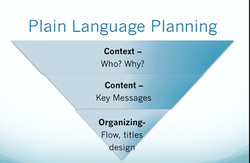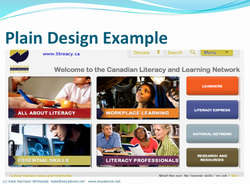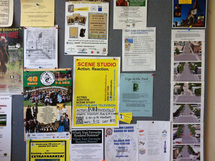Always start with the 5 Ws: who, why, what, where, when. Spend time carefully, and deeply analyzing your audience (who) and purpose (why). All content decisions should be made based on these two key points.
Website audiences can be categorized as user who are skimmers - on a mission to find something, fast. Website users scan in an F pattern, seeking headings, subheadings and links. Readers scan also. Are you giving your readers and visitors what they want? The best way is to ask and involve them. See the links below for some tips.
Plain language is all about accessibility. Print design is about being reader-friendly. And websites are all about usability. Putting print and web design together with plain language can deliver powerful results.
Today's audiences are media savvy. They want visual and audio options, as well as text. Give them video, podcasts, galleries. Satisfy their hunger. But, don't over do it. The easyread.drugabuse.gov site is a great example of the blending of written and visual elements. And, in print - use simple and realistic graphics, supported by a readable font, and a design that uses lots of white space.
With the help of an experienced assessor, carry out usability testing before you go live or go to print. You'll be glad you did.
Put your readers first; put content at the beginning the communications plan; and follow plain language guidelines from start to finish. The results will be satisfying – for you and your users.
Here are more helpful links:
Power of Plain Language Bibliography
Usability testing sites:
www.Online-utility.org
read-able.com (web content)
readabliity-score.com
Sample plain language websites:
easyread.drugabuse.gov
www.gov.ns.ca/wcat
www.thewclc.ca/edge
www.literacy.ca
sarn.ca
If this looks like the kind of presentation you'd like for your organization, please contact me, Kate Harrison Whiteside at
[email protected] or Terri Peters, TLP Training at, [email protected]
Mark Your Calendars for Plain Language Association International's PLAIN2013 Conference in Vancouver - Oct 10-13, 2013. Celebrate with us...Keep searching for PLAIN2013. The website is coming soon.



 RSS Feed
RSS Feed
